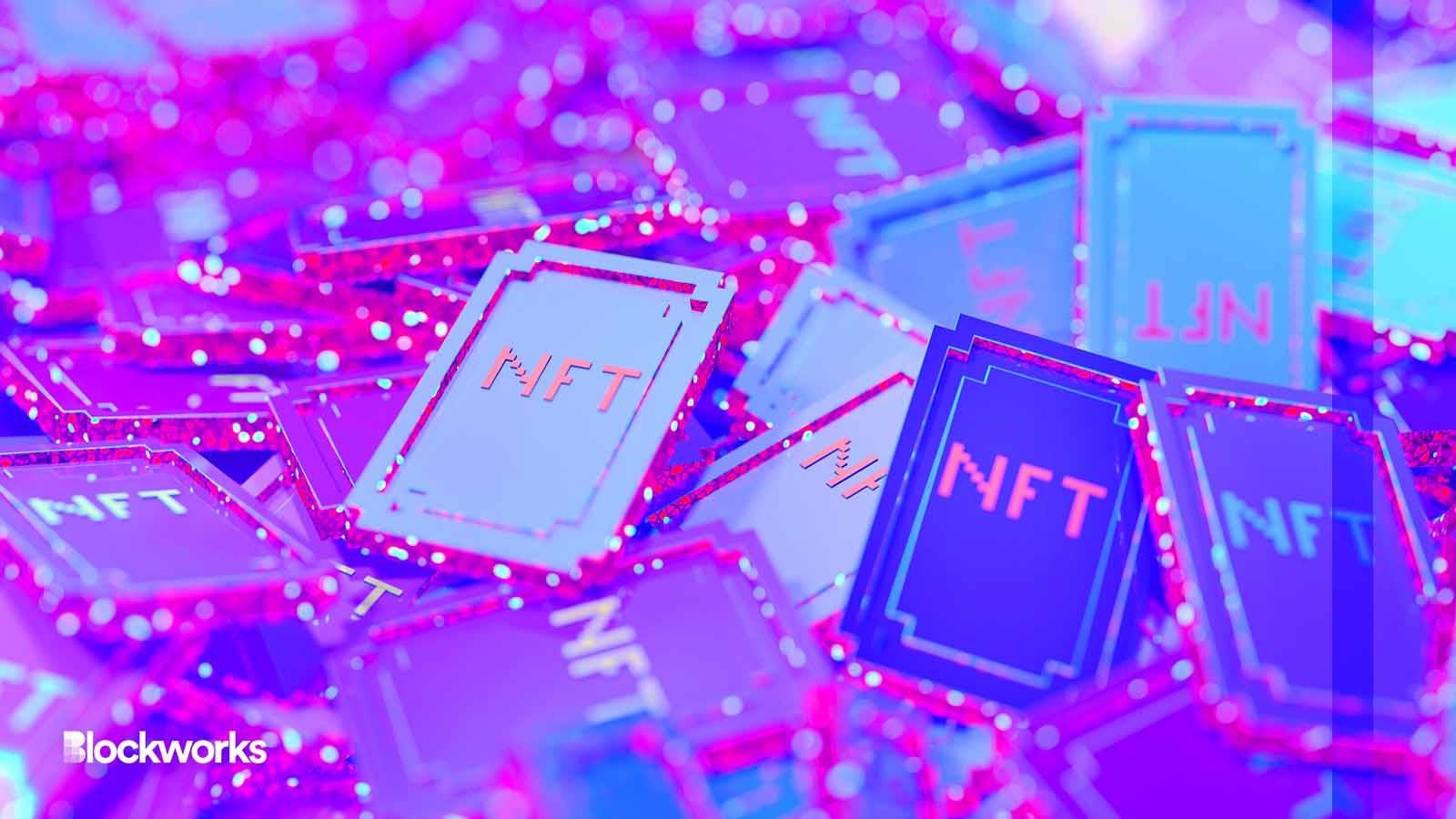NFT execs: Cutting barriers, propelling use cases key to segment rebound
OpenSea sees “enormous potential” in redeemable NFTs and the gaming space, marketplace’s chief business officer tells Blockworks

whitehoune/Shutterstock modified by Blockworks
NFTs were once all the rage.
Though many still believe in their promise, industry executives point to the need to cut barriers to entry and educate prospective participants on the potential of digital collectibles as trading volumes have dropped.
The quick-profit mentality that has permeated the NFT segment is one factor contributing to a recent reputational dropoff, MakersPlace CEO Craig Palmer told Blockworks.
OpenSea Chief Business Officer Shiva Rajaraman said there’s still a lack of understanding of the full scope of NFT use cases — a fact that must change to attract the next 100 million users.
NFTs were one of the most talked about acronyms of 2021, as popular collections such as Bored Ape Yacht Club hit the scene. Others that had launched years earlier, such as CryptoPunks, gained mainstream recognition then, demanding purchase prices not seen before.
Sentiment slipping
The hype around NFTs cooled amid the 2022 crypto winter, as sales volumes in the segment dropped considerably later in the year.
NFT trading volume dropped 35% quarter over quarter, according to a Tuesday CoinGecko report — from $4.84 billion in the first three months of 2023 to $3.15 billion during the second quarter.
Though NFT lending jumped 453% in May due in part to the launch of Blend — a peer-to-peer perpetual lending protocol for NFTs launched by marketplace Blur — strong demand for loans have hit so-called blue-chip NFTs hard.
Read more: How Does NFT Lending Really Work? A Beginner’s Guide
The ether (ETH) floor price for Bored Ape Yacht Club NFTs and Azuki NFTs sank about 42% and 37%, respectively during the quarter, CoinGecko data shows. Though Chiru Labs, the company behind Azuki, sold out its new “Elementals” collection last month, it faced backlash for making them too similar to the original Azuki NFTs.
While Blur’s share of NFT trading volume increased from 56% to 65% quarter over quarter. OpenSea’s share declined from 33% to 23% in that period, according to the CoinGecko report.
“As with the rest of crypto, the NFT market hits bear and bull cycles,” OpenSea’s Rajaraman said. “We are using this current cycle to prepare and build for the next wave of adoption.”
How to attract prospective NFT users
Education around potential use cases of NFTs, and lowering barriers to adopt them, are critical, according to Rajaraman.
“We’re focused on improving the usability of our platforms and building foundations that enable new, more utility-based and mainstream use cases to launch,” he said.
OpenSea sees “enormous potential,” for example, in redeemable NFTs and gaming, Rajaraman said.
The NFT marketplace joined forces with Puma and Gutter Cat Gang to launch a limited-edition digital collectible redeemable for physical LaMelo Ball sneakers. It also partnered with Parallel Avatars — representing holders in games and online activations — which minted in about 20 minutes and earned $1.3 million in primary sales.
“We’re constantly looking to partner with innovative brands and creators who are pushing the boundaries of the tech and bringing new, tangible use cases to life,” Rajaraman said.
The NFT space must try to distance itself from the narrative of scams and financial losses, according to the CEO of MakersPlace.
Palmer added that brands such as Starbucks and the NFL have done a good job of showcasing unique ways NFTs can drive engagement. The coffee retailer was prepping an NFT airdrop for its rewards program in May, while the pro football league launched a digital video highlight NFT platform with Dapper Labs last August.
“Over time, this will help reshape public perception and attract a wider audience,” Palmer said.
Real-world NFT use cases are in their early stages — from being used as tickets by concertgoers and airline customers to emerging within the real estate investing market.
Read more: Mastering NFTs: From Beeple to Starbucks to Digital Twin Cities
MakersPlace launched its Phygitals category in February, NFTs that lets buyers unlock and redeem the physical component after purchase.
But beyond the evolution of what NFTs look like and can be used for, marketplaces are really looking to make the experience of buying these tokens easier.
MakersPlace allows collectors to use crypto or credit cards for payment and offers a Concierge Program to assist collectors with buying, selling and collection management.
“Even top-tier teams in the NFT space often lack well-defined plans and a long-term vision, which is concerning given the industry’s nascent stage,” Palmer said. “However, I firmly believe that this phase of quick gains and massive speculation will give way to a new phase that prioritizes sustainable growth and attracts new cohorts to the world of NFTs.”
Get the news in your inbox. Explore Blockworks newsletters:
- The Breakdown: Decoding crypto and the markets. Daily.
- 0xResearch: Alpha in your inbox. Think like an analyst.






